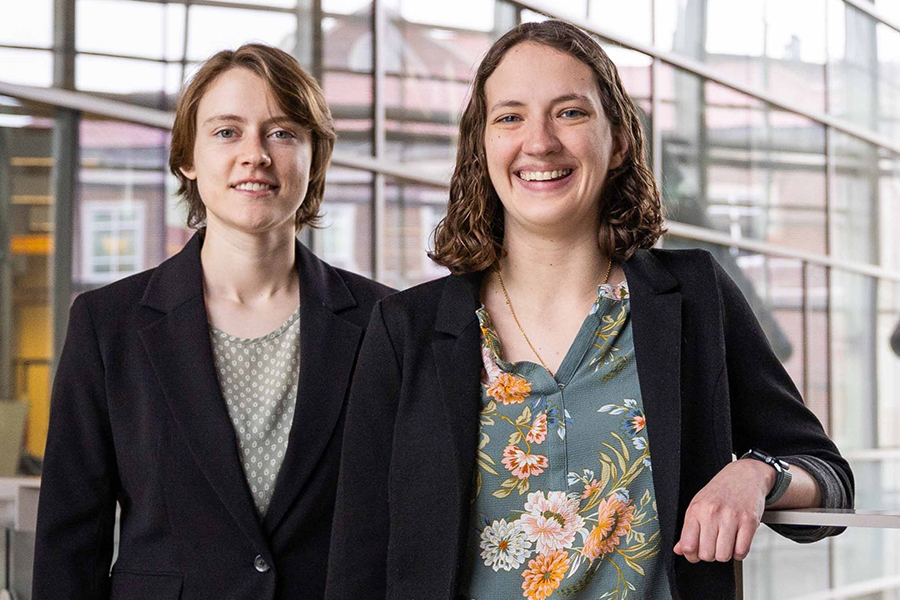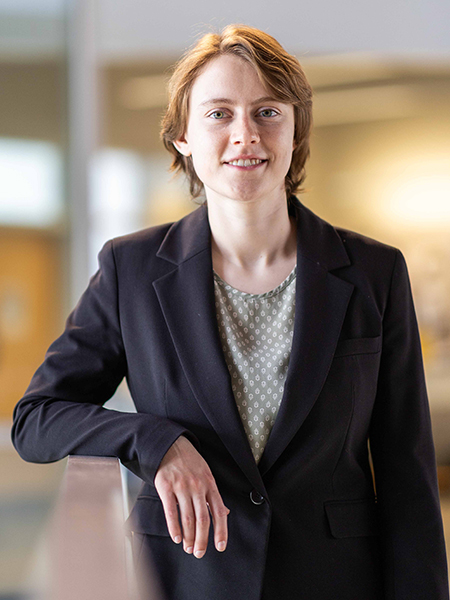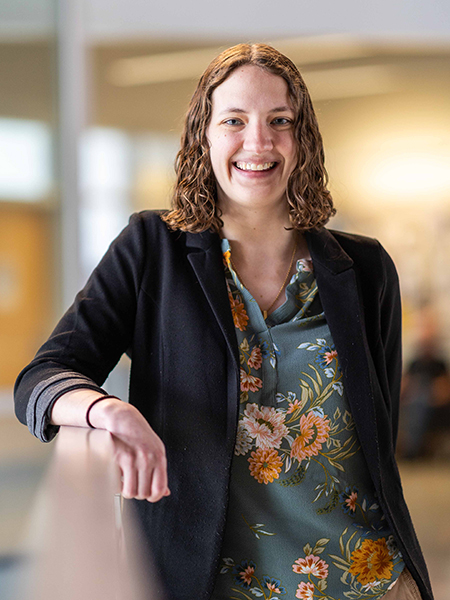Engineering names second group of TRACER grant recipients

Two graduate students, Emily Barber and Glynn Gallaway, are the newest recipients of a program that will allow them to immerse themselves in prominent research laboratories outside of Purdue University.
The TRAvel for CollaborativE Research (TRACER) grant, offered through the College of Engineering, has two objectives: to assist doctoral students and postdoctoral fellows who are strongly motivated and well-prepared to secure faculty positions at top universities and to facilitate collaborations between college faculty and other top research groups and engineering colleges and universities.
The TRACER program allows grantees to learn new research techniques, broaden research networks and either begin or continue work in their fields with world-leading experts at top institutions. The program will reimburse travel expenses, which could include transportation, lodging and per diem while traveling to and from the host lab.
Emily Barber

Barber received her BS in environmental engineering from the University of Georgia in 2021 and subsequently joined Purdue as a master’s student. She received her MS in 2023 and continued to pursue a PhD while being co-advised by Xiulin Ruan and Travis Horton. In addition to this TRACER grant, she is a recipient of the National Science Foundation (NSF) Graduate Fellowship in 2021, the Purdue Mechanical Engineering Fellowship in 2021, the third prize of the Purdue Moonshot Competition in 2021 and the South by Southwest Innovation Award for Sustainability in 2023.
Barber will travel to the National Renewable Energy Laboratory (NREL) in Golden, Colorado, to work under Marcus Bianchi in the Building Energy Science Group. There, she will continue her work on how recent innovations in radiative cooling coatings can save building owners money, reduce HVAC demand and combat climate change. The work will be bolstered by NREL's experience in the topic, the creation of the frequently used EnergyPLUS program and a prime location for outdoor experimentation.
“I'm really excited to work with the brilliant scientists at NREL to further Purdue innovations in the field of radiative cooling,” Barber said. “I look forward to the expertise, experimental capabilities and networking opportunities that this collaboration will provide.
“Collaboration is the key to success in any field. I'm very grateful to TRACER for giving me the chance to expand my network while placing me in the heart of building energy sciences. I'm excited to bring the knowledge I gain back to my group and publications.”
Glynn Gallaway

Gallaway, who received her BS from Purdue in 2020, is a PhD candidate studying the fracture mechanics of human bone in the lab of Thomas Siegmund, a professor in the School of Mechanical Engineering. In addition to this TRACER grant, she was a Fulbright Scholar in 2020, an NSF Graduate Fellow in 2021 and a recipient of the Dr. Anil K. Bajaj Outstanding Service Scholarship in 2023.
Gallaway will travel to the University of New South Wales in Sydney, Australia, this summer to work alongside professors Jay Kruzic and Bernd Gludovatz. Their collaborative focus will be on implementing a 3D computational model capturing bone structure and mechanics across length scales.
“Our labs have engaged previously with research projects on bone,” Gallaway said. “With this project, we hope to move fracture mechanics and modeling of bone closer to the bedside. Understanding fracture mechanics of bone is important to both our healthcare infrastructure and to advancing health outcomes, especially for women.
“The TRACER program provides support for me to engage in this collaboration which would otherwise not be possible.”
